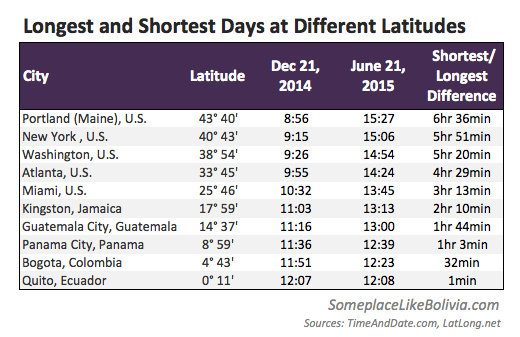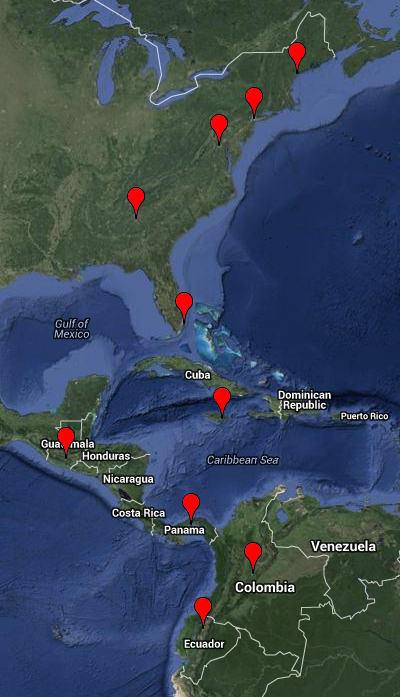Today is the Summer Solstice in the Northern Hemisphere. Spring is over, and Summer is now officially upon us as we celebrate the longest day of the year.
Ever since December 21, as it has revolved around the Sun, Earth’s titled axis has been changing which half of the globe gets more direct solar exposure. And for the North, that means a gradual increase the amount of sunlight per day. The difference can be dramatic. Where I grew up in the United States, for example, the contrast is — pardon the pun — night and day.
Portland, the crown city of the great state of Maine, will enjoy 15 hours and 27 minutes of daylight today compared to the depressing 8 hours and 56 minutes it received on December 21, 2014. That’s an extra 6 hours and 36 minutes of sunshine.
In addition to the vast temperature fluctuation in the Northeast United State from December to June, this change in daylight affects everything. A 9:02 pm sunset on June 21 allows for a fun-filled, late-evening barbecue, whereas when sunset hits at 4:40 pm on December 21 most people must drive home from work in the dark. It’s a miserable winter reality up north that pushes many into depression and others to drink.
For those living closer to equator, however, there is no noticeable difference.
Here in Colombia’s capital city of Bogotá, June 21 is virtually the same as December 21 — and every other day of the year. Sitting just 318 miles (512 km) north of the equator, Bogotá’s daylight difference between its longest and shortest day of the year is just 32 minutes.
Every day, all year long, the sun rises at about 6:00 am and sets at 6:00 pm — 12 hours of light, 12 hours of darkness.

Given the big “change” the city is experiencing today it’s no wonder they say, “There are no seasons in Colombia, just elevations.” The climate can be quite different depending on where and how high up you are in the mountains, but the weather doesn’t change much in any individual city. (The sea-level Caribbean city of Cartagena, for example, enjoys balmy temperatures in 80s and 90s all year while Bogotá, sitting 8,600 feet up in the Andes, has chilly nights 365 days per year.)
Then there is Quito, the capital city of the neighboring Ecuador.
With a latitude of 0° 11′ (technically in the Southern Hemisphere), it has even less daylight change than Bogotá. What was the difference this year between the longest and shortest day in Quito?
One minute.
Perhaps the lack of seasonal mood disorder is one reason why people in Colombia and Ecuador seem so happy all year long. Sure, they never get to enjoy the long Summer days that seen to never end in the northern United States. But they also never have to wake up and drive home in the dark.
So I’ll take this change of (l)attitude over the cold, dark months of the Northeast every time.



